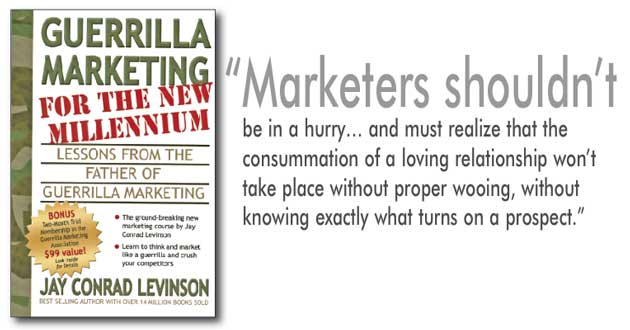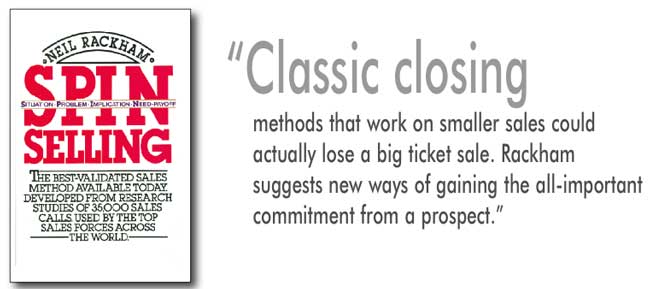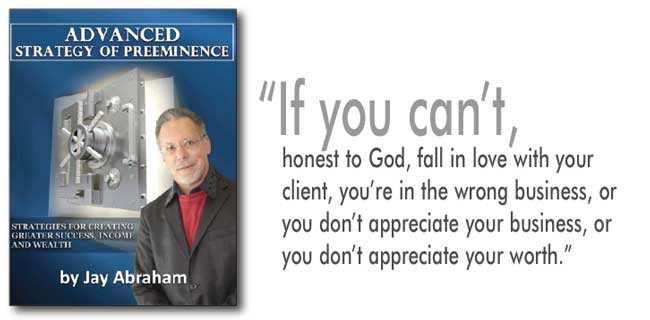Do we need to rethink how we sell home furnishings? Are big tickets radically different than smaller item sales? Do they require a different technique to be optimally effective? There is strong evidence that they do. Let me explain.

Way back in the 1920s a guy named E. K. Strong revolutionized selling. He came up with the concept of selling benefits supported by product features. Strong also introduced new ideas about closing methods, overcoming objections, and using open and closed questions to probe a customer’s needs.
Strong’s models worked. More than eighty years later we are still using various versions of them. But several years ago Neil Rackham introduced “S.P.I.N. Selling,” a concept that challenged the conventional selling model, at least as far as big tickets go. He said that smaller tickets involve a low-end relationship, whereas big tickets require a deeper, more consultative relationship.
Conventional Selling vs. S.P.I.N. Selling
Every salesperson knows it is easier to sell a lamp than a $10,000 roomful of furniture. Yet, we also know that a small ticket sale can develop into a big ticket; and building a ticket is an important source of profit. This potential exists in home furnishings sales to a greater degree than most retail. In fact, it may be that the superstars of selling furniture intuitively apply the techniques of big ticket selling to every sales presentation, be it a recliner or a top of the line mattress.
When Neil Rackham pointed out the strategic difference between small tickets and big tickets several years ago, it was no big surprise to veterans in selling. But there is more. Rackham also based his four-step selling process on a million dollar study of actual sales performances of top salespersons. And his findings challenged much of the conventional wisdom of trainers about selling big ticket items.
Rackham’s book, S.P.I.N. Selling, claimed that some of the most revered selling methods might be fine for small tickets, but they could actually hurt a bigger ticket sale. He began to formulate his premise after a two month study he made for a Fortune 100 company. In his study he actually observed the methods of the super-star salespersons in the field. The results of this initial study were so shocking that his company launched a twelve-year study to verify the results. Here is an overview of the findings–and the case for a different approach to big tickets:
- The Opening: Classic openings find ways to relate to the prospect’s personal interests and to make benefit-rich opening statements.
Finding: Good idea for small sales, but their value is doubtful for big tickets.
- 2. Exploring Needs: Use open and closed questions to probe the prospect’s needs.
Finding: Good for small sales, but this probing must be redefined big time for large ones.
- 3. Proclaiming Benefits: Explain how the benefits will help the prospect’s needs, and how the product features of your offer provide support for those benefits.
Finding: Nope. (This shocked me). Works on the small ticket, but “fails entirely” on the larger one. Rackham claimed a new type of strategic benefit-demonstration that proved much more successful for big tickets. More on this in just a moment.
- 4. Overcoming Objections: Restate and clarify the prospect’s objections–then overcome them.
Finding: The most successful salespersons concentrate on objection prevention, not objection handling. Rackham claimed that his formula cut objections by more than half.
- 5. Closing Methods: Great salespersons are killers at closing the sale.
Finding: The classic closing methods on smaller sales could actually lose a big ticket sale. Rackham suggests new ways of gaining the all-important commitment from a prospect.
According to Rackham a successful sales presentation for big tickets involves four stages of probing:
- Preliminaries
- Investigating
- Demonstrating Capability
- Obtaining Commitment.
He believes each of these four stages involve different types of probing questions. Notice below that these questions create the acronym, “S.P.I.N.” (If you think that “SPIN” may not be the best acronym for a sales presentation, I agree.)
S.P.I.N.
SITUATIONAL QUESTIONS:
Successful salespersons do ask data gathering questions about facts and background. Example: “How long have you had your present mattress?”
PROBLEM QUESTIONS:
Once sufficient data has been gathered about the prospect’s situation, the most successful salespeople gravitate to questions regarding the problem the prospect may be experiencing.
Examples: “Are you concerned about the quality of sleep you are getting?” “Have you experienced morning backache?” “Have you noticed your energy levels dropping?”
IMPLICATION QUESTIONS:
So far so good with a smaller ticket. However, when it comes to big tickets, a third and more complex and sophisticated series of questions are needed. Implication questions are especially important for big ticket sales. These questions take a prospect’s problem and explore it in depth. Examples: “How do you think this might affect your well-being and happiness?” “If your sleep was better do you believe you might be able to get by with less?” The idea is to help a prospect understand the seriousness or urgency of their problem.
NEED-PAYOFF QUESTIONS:
In Rackham’s studies top performers asked ten times as many Need-payoff questions as did average performers. So their importance cannot be overstated. The key is to get the prospect to explain to you the benefits that your solution would provide. Examples: “If you could improve the quality of your sleep by 25% to 50%, how do you think that would impact your life?” “Can you imagine some ways that continuing to sleep on an older, inadequate mattress might affect your health?”
This is a barebones presentation of S.P.I.N. Selling. I found it fascinating. But if you are like me, you may have a hard time grasping and applying the subtleties and nuances of Rackham’s arguments. I write this although I believe he has his finger on something important.

There follows a third approach to selling big tickets, one recommended by arguably the two top marketing gurus in the world. The two “Jays” (Jay Abraham and Jay Conrad Levinson) both separately advocate a method of selling big tickets that more resembles romance and sex than dry sales techniques. Don’t get me wrong. I am deadly serious here. The “Two Jays” method could revolutionize selling relationships as we know them.
Become a Trusted (& Romantic) Sales Professional
Jay Abraham published an amazing document titled: “Advanced Strategy of Preeminence.” In 25 pages he summarizes his extraordinary ideas of marketing. It is available for free on his website, http://abraham.com/ strategy-of-preeminence. I have read the Strategy of Preeminence several times. But there is one statement Abraham makes that I have puzzled over. Here it is:
“Most people fall in love with their product or their company instead of falling in love with their client. If you have a higher calling or purpose, it has nothing to do with your getting rich. It has nothing to do with you being technologically the most sophisticated producer. It has everything to do with your bringing enhanced advantage, protection, benefit, richness of life or business to your client.
“If you can’t, honest to God, fall in love with your client, you’re in the wrong business, or you don’t appreciate your business, or you don’t appreciate your worth. If you do appreciate it, but your team doesn’t, you’ve got to fall in love with your team and help them, lovingly but unflinchingly, and almost relentlessly see how to fall in love with clients (along) with you.
“I’m not being metaphysical. I’m being bottom line serious. It’s unbelievable. I’m giving you the secret to richness in life at a level your pocketbooks and heart will never imagine. A massive change will occur in your whole mindset when you can see your business as interacting and enhancing people and their lives. It’ll totally change the way you see things.”
This is not the kind of philosophy you normally hear in a retail furniture sales meeting. The first several times I read it, I thought: “Well, Jay Abraham can get away with saying something like this. But, who else would dare?” Enter Jay Conrad Levinson.
In contrast to Abraham’s lofty idealism, Levinson uses the analogy of courtship to playfully illustrate the service motive relationship. In Levinson’s book, Guerrilla Marketing for the New Millennium, he provides a valuable summary of his marketing ideas. An especially entertaining chapter is: Guerrilla Marketing as Sex. It blew me away. There follows a brief summary of what he wrote.
“The whole idea of guerrilla marketing is to transform cold prospects into consenting partners. As with superb sex, marketers shouldn’t be in a hurry… and must realize that the consummation of a loving relationship won’t take place without proper wooing, without knowing exactly what turns on a prospect.”
Levinson goes on to say that when smart salespersons begin to “think less of marketing as impersonal communications and more a sexual journey, they will be more able to market with success. In today’s cluttered environment of marketing, instead of pondering numbers and demographics, explore instead the concepts of romance and love.”
Levinson goes beyond abstraction. He suggests that the process of gathering information from a prospect is gaining “uncarnal knowledge.” It is like discovering shared values in the manner of two lovers getting to know each other with romance in mind. At this point Levinson suggests a version of the Golden Rule: Although each prospect must be treated differently, all prospects must be treated as they want to be treated. This is like flirting, the first steps toward gaining consent. No, not trying to sell something, but rather creating a courtship. The prospect knows for sure that her individuality is recognized. Levinson is just warming up.

Next, according to Levinson, is making out. Because the guerilla marketer is listening carefully to the prospect, her likes and dislikes, and her specific problems, the marketer can make promises that must be kept. And this leads to foreplay according to Levinson. (I can’t make this stuff up. I wish I had the genius and courage to do so.) This is where the marketer provides the custom messages the prospect craves, making them feel special and proving the marketer’s devotion. The next step is consummation, closing the sale with mutual consent. With unhurried patience and impeccable timing (made possible by the sincere empathy with the prospect), the marketer provides joy and satisfaction for the prospect. In Levinson’s words, “The earth may not tremble, but a lasting bond has been created.”
Finally, the afterglow. The marketer proves that there is still respect for the prospect in the morning by diligently following up. Communications of appreciation delight the prospects who cannot help but relate their enchantment to everyone they know. Levinson concludes:
“The entire process involves a lot more than a mere sexual dalliance but is the start of a long and happy marriage.” The devotion of the salesperson “is unmistakable because it builds upon details that have been learned, specific tastes of each customer and their shared experience of the sale, purchase and use. The more you view the marketing process as a mating ritual more than an economic ritual, the longer will be your list of consenting and delighted patrons.”
A Sincere Service Motive
What the “Two Jays” are communicating is a profound shifting attitude in the situational field that modern salespersons operate in. Slowly, but with inevitable certainty, the pure profit motive is being augmented by a sincere service motive. And that is what you should take home from this article. Those salespersons who are ahead of the curve in understanding this will be the great beneficiaries. I must add that it is the compassionate salespersons who, by nature, exercise the empathy that could make them tomorrow’s outstanding sales stars, with one caveat. They must learn to balance empathy with an equal amount of confidence. And those more assertive salespersons who want to dramatically increase their success may do so by modulating their confidence with greater compassion. For a complete profile of what it takes to achieve this dynamic balance, see part three in my “Scientific Selling” series at https://www.furninfo.com/ series/ScientificSelling.
My thanks to a top “in the trenches” sales manager for a large furniture store who reviewed this article for me. He added this comment:
“In my judgment the key to sales success is both the S.P.I.N. and the “romantic” professional techniques and philosophies. You don’t own the right to ask the SPIN type questions until you are perceived by the prospect as a trusted/romantic sales professional. If the prospect wants some know-it-all salesperson who has all the answers to their concerns they can spend the day surfing the web for that type of information. But you won’t communicate empathy and engender trust that way. The human touch is still requisite to success, especially in a field such as ours. Perhaps you can be good at sales with one technique or the other going for you, but you won’t be great.”
Larry Mullins is a contributing editor for Furniture World and has 30+ years of experience on the front lines of furniture marketing. Larry’s mainstream executive experience, his creative work with promotion specialists, and mastery of advertising principles have established him as one of the foremost experts in furniture marketing. His affordable High-Impact programs produce legendary results for everything from cash raising events to profitable exit strategies. His newest books, THE METAVALUES BREAKTHROUGH and IMMATURE PEOPLE WITH POWER… How to Handle Them have recently been released by Morgan James Publishing. Joe Girard, “The World’s Greatest Salesman” said of this book: “If I had read Larry Mullins’ book when I started out, I would have reached the top much sooner than I did.” Larry is founder and CEO of UltraSales, Inc. and can be reached directly at 904.794.9212 or at Larrym@furninfo.com. See more articles by Larry at www.furninfo.com or www.ultrasales.com.